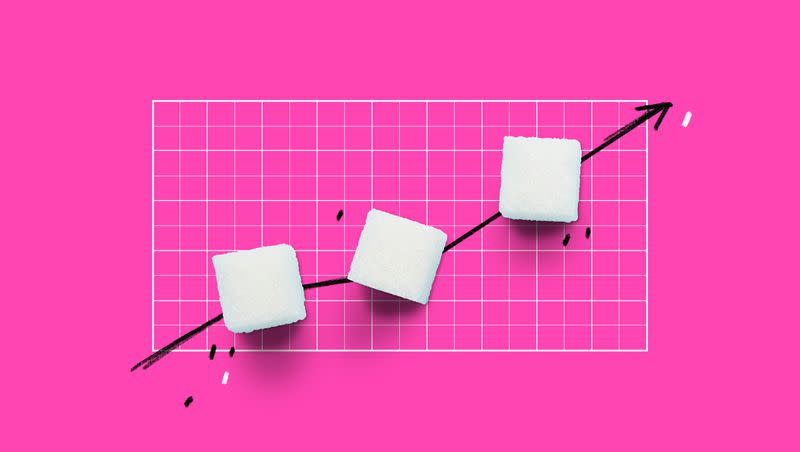13 foods that may have unexpected sugar

As the holidays approach, ushering in more sweets and party fare than you’d normally eat, lots of folks will be trying especially hard to limit their sugar intake.
The American Heart Association, which is holding its international scientific session in Philadelphia this weekend, has said that added sugar should be no more than 6% of a day’s calories. For most women in the U.S., that means 100 calories or less, which is 25 grams or six teaspoons tops. For American men, it’s 150 calories, which is 36 grams or nine teaspoons.
The association says there are four calories per gram of sugar, so something with 15 grams adds 60 calories in just the sugar alone.
The organization says to focus on all added sugars and not just single out one type, like high fructose corn syrup.
It’s not all about weight, either. Harvard Health cites a study from JAMA Internal Medicine that found an association between eating a high-sugar diet and dying from heart disease. Dr. Frank Hu, professor of nutrition at the Harvard T.H. Chan School of Public Health, said that “the effects of added sugar intake — higher blood pressure, inflammation, weight gain, diabetes and fatty liver disease — are all linked to an increased risk for heart attack and stroke.”
Even very health-conscious people may be getting way more sugar than they should, in part because sugar in various forms has been added to products that you might not expect. The only way to be sure is to check the ingredient and nutrition labels.
Here are 13 types of food that can foil your plan to cut back on sugar:
Reduced fat peanut butter. Food Network says that to “replace the fat, sugar is often added in the form of maltodextrin, corn syrup solids and molasses.” A two-tablespoon serving delivers a teaspoon of sugar.
Low-fat yogurt. A one-cup serving, according to Healthline, can contain as much as 45 grams of sugar, which is close to 11 teaspoons.
Multigrain cereals that are supposed to be healthier than sugar-laden, kids-targeted cereal often have 10-20 grams of sugar per cup of cereal. It’s a staple in some popular grain cereals. And it’s especially common in instant oatmeal, which often has 12-15 grams of added sugar per small pack.
Canned baked beans, since a one-cup serving can contain about five teaspoons of sugar.
Soda pop has about eight teaspoons of sugar, or 32 grams.
Barbecue sauce. Four tablespoons of sauce has 4.5 teaspoons of added sugar. Think about that when you’re slathering ribs.
Canned fruit with even “light” syrup has a lot of sugar — about 39 grams per cup serving. If you drain it off, you’ll still have about 15 grams. Fruit in heavy syrup has more.
Raisins: A small box has at least 25 grams of sugar. This isn’t added sugar, though. When the grapes lose their water, the sugar is more concentrated in what’s left.
Pasta sauce naturally contains sugar from tomatoes. But a lot of brands still add more. The only way to tell is to check the label.
Nondairy milk. Nutrisense says a cup of almond milk contains 7.2 grams of sugar while vanilla almond milk contains 15 grams. Oat milk also contains as much as 7 grams of added sugar per cup.
Protein bars are beloved as a healthy snack. And some are. But others contain as much as 20 grams of sugar, comparable to a candy bar, says Healthline.
Commercially packaged soups. Check the labels.
Many crackers and breads often, though not always, contain added sugar.
A sweet by any other name
WebMD, FoodNetwork and Healthline report that labels often say something else, instead of sugar. Some common names for sugar in food are:
Evaporated cane juice.
Fruit juice concentrate.
Syrup means sugar, including brown rice syrup, corn syrup, date syrup, etc.
Barley malt.
Maltose.
Galactose or glucose.
Agave nectar.
Crystalline fructose.
Molasses.

